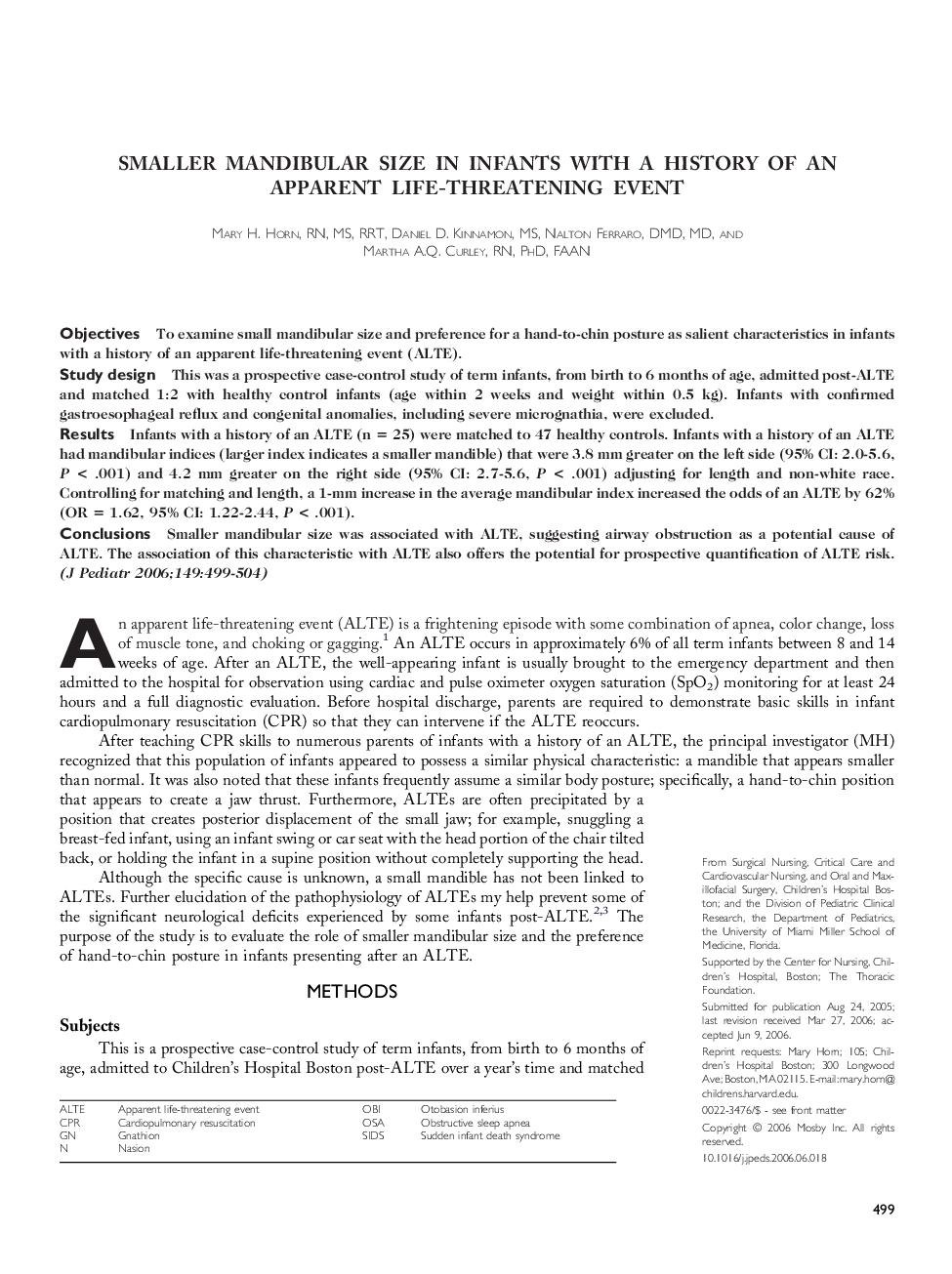| Article ID | Journal | Published Year | Pages | File Type |
|---|---|---|---|---|
| 4169152 | The Journal of Pediatrics | 2006 | 6 Pages |
ObjectivesTo examine small mandibular size and preference for a hand-to-chin posture as salient characteristics in infants with a history of an apparent life-threatening event (ALTE).Study designThis was a prospective case-control study of term infants, from birth to 6 months of age, admitted post-ALTE and matched 1:2 with healthy control infants (age within 2 weeks and weight within 0.5 kg). Infants with confirmed gastroesophageal reflux and congenital anomalies, including severe micrognathia, were excluded.ResultsInfants with a history of an ALTE (n = 25) were matched to 47 healthy controls. Infants with a history of an ALTE had mandibular indices (larger index indicates a smaller mandible) that were 3.8 mm greater on the left side (95% CI: 2.0-5.6, P < .001) and 4.2 mm greater on the right side (95% CI: 2.7-5.6, P < .001) adjusting for length and non-white race. Controlling for matching and length, a 1-mm increase in the average mandibular index increased the odds of an ALTE by 62% (OR = 1.62, 95% CI: 1.22-2.44, P < .001).ConclusionsSmaller mandibular size was associated with ALTE, suggesting airway obstruction as a potential cause of ALTE. The association of this characteristic with ALTE also offers the potential for prospective quantification of ALTE risk.
